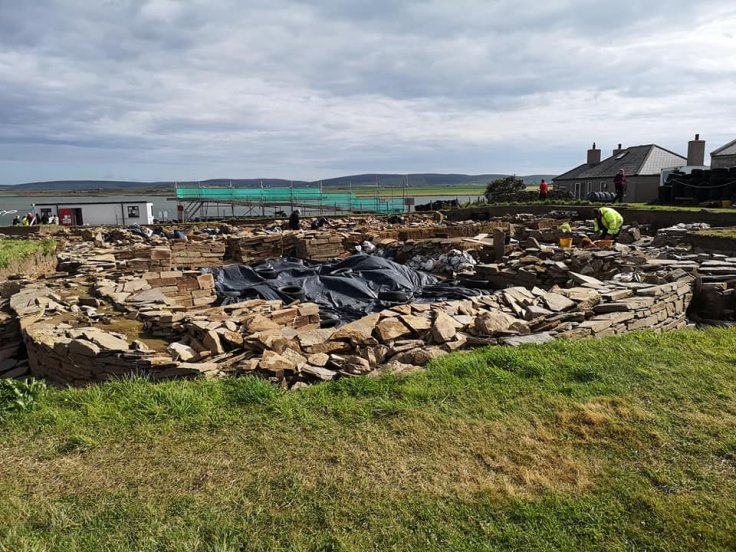
Orkney, the archipelago off the northeastern coast of Scotland, is known for it's the historical sites such as Ring of Brodgar and the well-known Skara Brae, which is a 5,000-year-old ancient village. Now, archaeologists have uncovered a large number of axes made with stones including more than 30,000 pieces of pottery, bones and tools from a 5,000-year-old site.
The Ness of Brodgar, which is an archaeological site that covers 2.5 hectares area in the Neolithic Orkney World Heritage Site, located between the Ring of Brodgar and the Stones of Stenness, has its own importance in the Neolithic excavations in Northern Europe. Ness of Brodgar Trust and the Archaeology Institute of the University of the Highlands and Islands (UHI) both are jointly conducting the excavation process.
Here archaeologists have discovered two polished stone axes that show damages, which is believed to have happened due to the use. An Australian student has found another tool, which later described as an object of beauty.
As per the BBC reports, the UHI has stated that after the archaeology student, Therese McCormick discovered the ancient axe the excavation team at the site became astonished by seeing its "sheer quality of workmanship".
The UHI also added that those days workers, who made these tools chose the Gneiss stone to make it and polished the item by applying their expertise to create an object of beauty. As per the researchers the first of the two recently found axes was discovered on the shore of Loch of Stenness, had been heavily used and that is the reason behind the damages, which is visible at the cutting age.
Nick Card, the site directors has said, "It is nice to find pristine examples of stone axes, but the damage on this one tells us a little bit more about the history of this particular axe. The fact that the cutting edge had been heavily damaged suggests that it was a working tool rather than a ceremonial object."
"We know that the buildings in the complex were roofed by stone slabs so this axe was perhaps used to cut and fashion the timber joists that held up the heavy roof," he further added.









